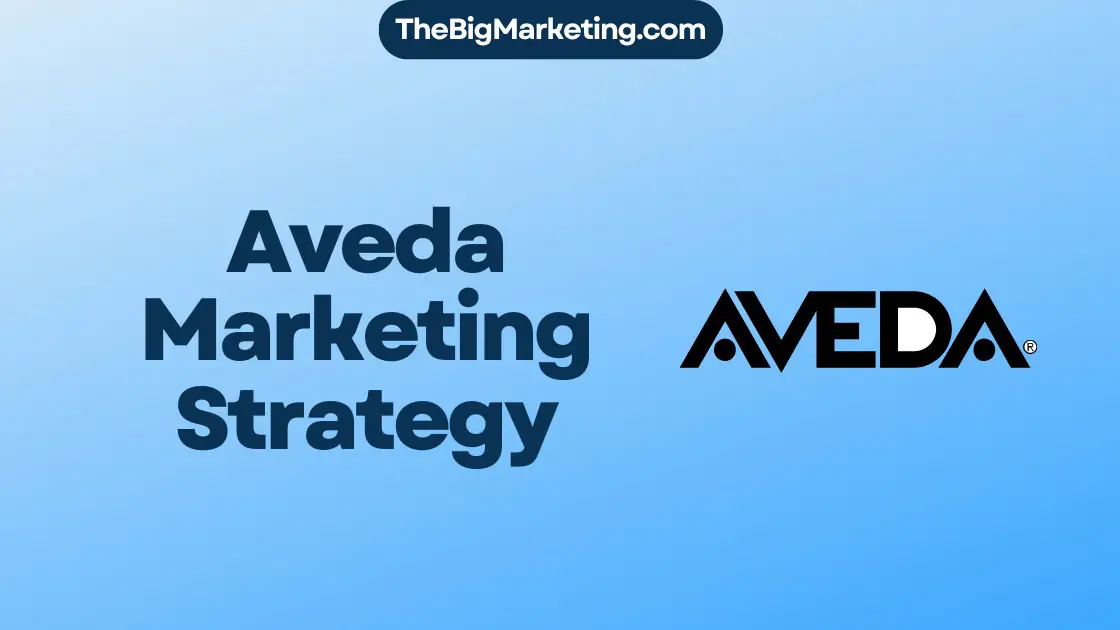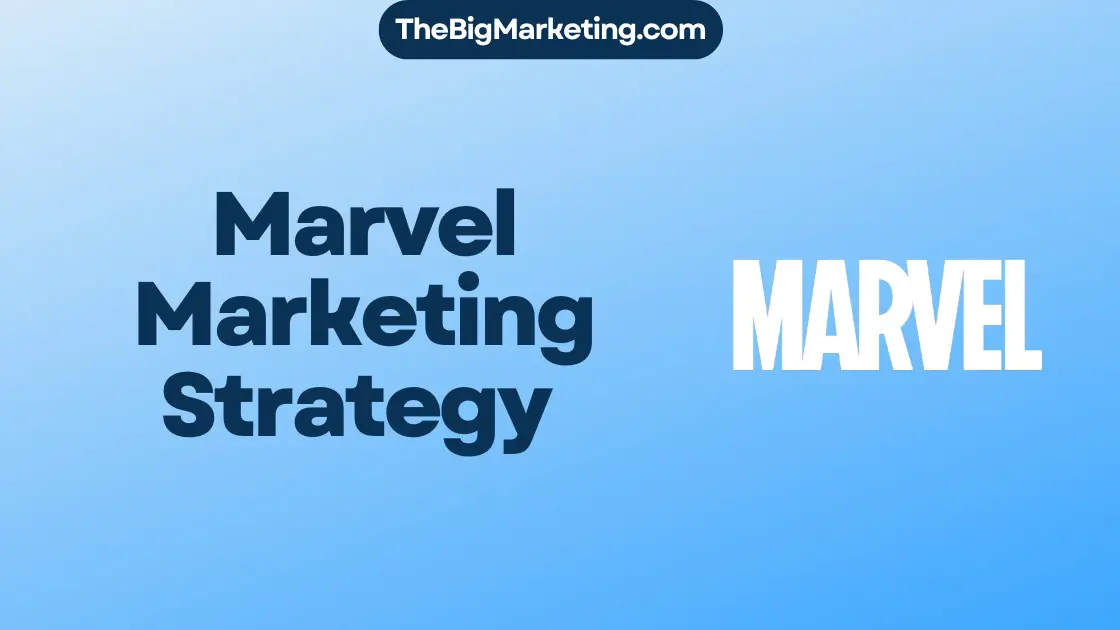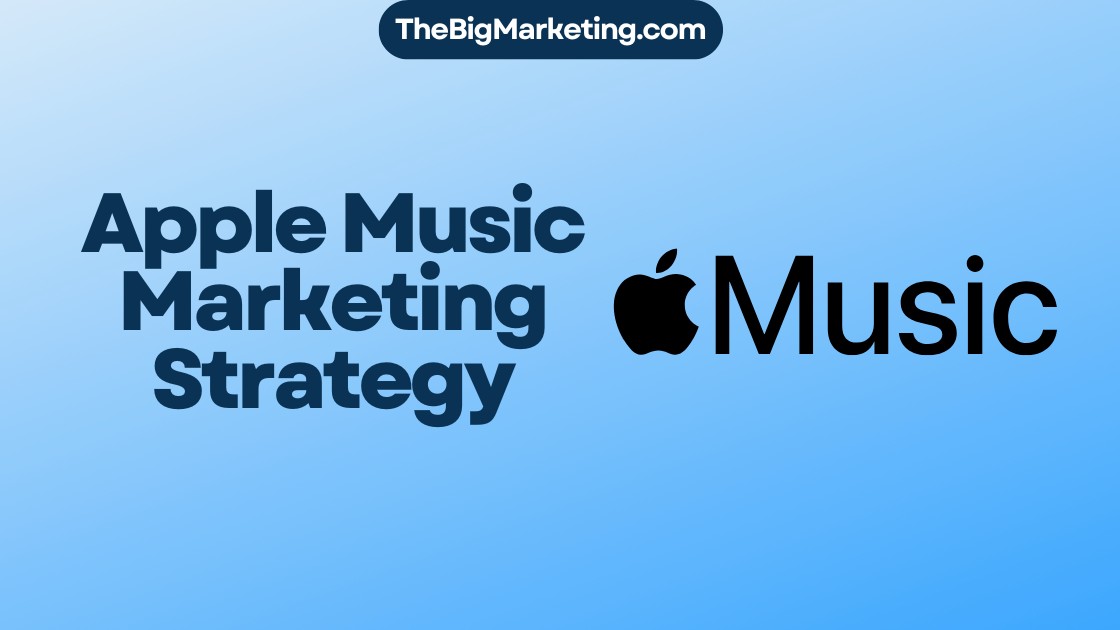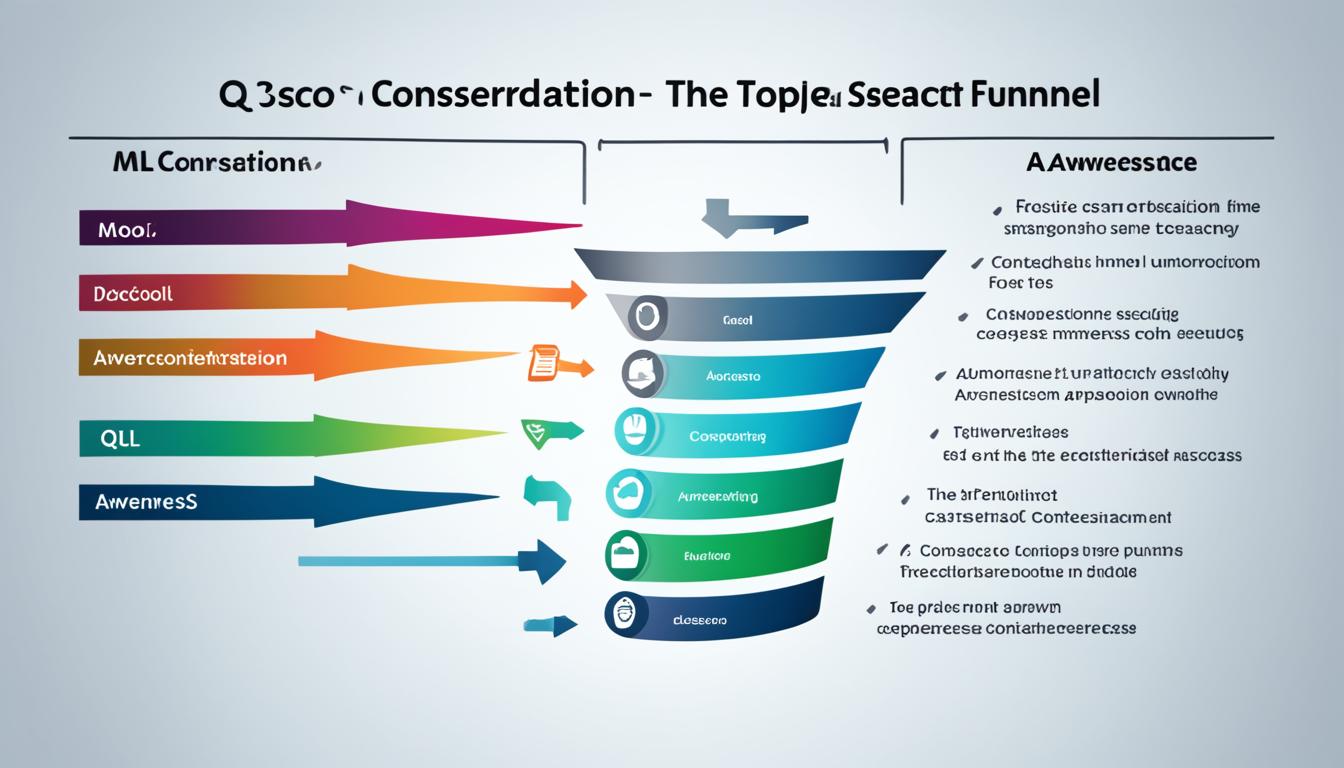Riot Games, the renowned developers behind League of Legends, have captivated the gaming world with their innovative marketing strategies. In this case study, we delve into Riot Games’ unconventional approach that revolutionized the advertising landscape. By exploring the success of their music group Heartsteel and their strategic utilization of social media, we uncover the key factors that contributed to their remarkable engagement with the audience.
Key Takeaways
- Riot Games excels in leveraging their dedicated fanbase to promote their marketing campaigns.
- By creating immersive and relatable personas for the Heartsteel band, Riot Games fostered a sense of community and engagement.
- Cryptic teasers, brand collaborations, and easter eggs generated buzz and excitement around Heartsteel.
- Active community management and in-character engagement established a genuine connection between the band and the audience.
- Riot Games’ success lies in their ability to create engaging content that aligns with the interests of gamers.
Key Factors of Riot Games Music’s Heartsteel Campaign
The success of Riot Games Music’s Heartsteel campaign can be attributed to several key factors that effectively captured and engaged their audience. These factors include a strategic branding approach and the implementation of various digital marketing tactics.
One of the primary elements that contributed to the success of the Heartsteel campaign was the use of in-character posts. Riot Games Music created personas for each member of the Heartsteel band, allowing them to interact with their audience from a unique and immersive perspective. This approach established a strong emotional connection between the band and the fans, igniting their enthusiasm and sense of belonging.
Teasers and collaborations also played a crucial role in the campaign’s triumph. Riot Games Music strategically released cryptic teasers and engaged in partnerships with brands like GQ, generating excitement and anticipation among their audience. These teaser campaigns fueled speculation and intrigue, encouraging organic conversation and engagement within the community.
Community management was another pivotal aspect of Riot Games Music’s marketing strategy. The team consistently engaged with their audience, effectively responding to comments, inquiries, and feedback. By fostering a transparent and interactive environment, Riot Games Music solidified their connection with the fanbase and built a dedicated following.
Posting engaging content was key to sustaining momentum throughout the Heartsteel campaign. Riot Games Music crafted creative and entertaining posts that aligned with the personalities of the band members. From quirky AMA posts to amusing behind-the-scenes content, they consistently provided their audience with valuable and enjoyable experiences.
These key factors collectively contributed to the success of Riot Games Music’s Heartsteel campaign, enabling them to establish a strong brand presence and foster meaningful connections with their audience.
In-character posts
As part of Riot Games’ branding approach and community engagement, Riot Games Music implemented a unique strategy for their Heartsteel campaign. They created individual personas for each member of the band, allowing them to engage with the community from their unique perspectives.
This approach successfully strengthened the bond between the characters and the audience, making fans feel like they were truly part of the band’s journey. By tapping into the “stan culture” that thrives on platforms like Twitter, where people love to feel connected to their favorite musical personalities, Riot Games Music fostered a sense of belonging and attachment within the community.
In-character posts played a crucial role in connecting with the audience, as they allowed fans to interact directly with the band members as if they were real individuals. The personas added depth and authenticity to the campaign, creating a captivating storytelling experience that resonated with fans. This unique approach not only showcased Riot Games’ commitment to immersing their audience in the Heartsteel universe but also emphasized their understanding of the power of community engagement in building a successful brand.
To further illustrate the impact of in-character posts, here is a comparison of engagement rates on Riot Games Music’s social media accounts before and after implementing this strategy:
| Engagement Metrics | Pre-in-character Posts | Post-in-character Posts |
|---|---|---|
| Likes | 3,000 | 10,000 |
| Comments | 500 | 2,500 |
| Shares | 200 | 1,000 |
As shown in the table above, the implementation of in-character posts resulted in a significant increase in audience engagement. The number of likes, comments, and shares more than tripled after the introduction of this strategy, indicating the positive response from the community.
By leveraging the power of in-character posts, Riot Games Music successfully deepened the connection between the Heartsteel band and their fans. This approach exemplifies Riot Games’ commitment to their community and their creative branding approach, allowing them to captivate and engage their audience in a unique and interactive way.
Teasers and collaborations
In order to generate excitement and engagement surrounding Heartsteel, Riot Games Music employed a combination of cryptic teasers and strategic brand collaborations. These tactics played a crucial role in building anticipation and positioning the band as trendsetters in the blending of reality and fiction.
Through cryptic teasers, Riot Games Music teased fans with tantalizing hints and clues related to the Heartsteel band members. These teasers served as puzzle pieces that fans eagerly assembled, fostering a sense of engagement and intrigue. By leveraging the element of mystery, Riot Games Music successfully generated buzz and sustained interest throughout the campaign.
In addition to the teasers, Riot Games Music partnered with influential brands such as GQ to further enhance the visibility and appeal of Heartsteel. Collaborations with renowned publications and iconic names aligned with Riot Games’ commitment to excellence and innovation. These brand partnerships not only allowed Heartsteel to reach a wider audience but also solidified their position as pioneers in bridging the gap between reality and fantasy.
The Power of Collaboration
The collaborations with GQ and other respected brands gave Heartsteel credibility and established their presence beyond the gaming community. These partnerships showcased Riot Games’ dedication to delivering high-quality content and expanding their reach through strategic alliances.
By tapping into the audiences of these established brands, Riot Games effectively extended the impact of the Heartsteel campaign and solidified their status as industry leaders in pushing creative boundaries.
| Benefits of Collaborations | Examples |
|---|---|
| Increased visibility | GQ cover featuring Heartsteel |
| Enhanced credibility | Collaboration with luxury fashion brands for Heartsteel’s stage outfits |
| Expanded audience reach | Collaboration with prominent social media influencers to promote Heartsteel’s music |
| Diversified content creation | Behind-the-scenes documentary collaboration with a popular streaming platform |
These collaborations not only benefited Heartsteel but also represented a successful integration of Riot Games into diverse sectors, expanding their brand presence and creating opportunities for future partnerships.
Community Management
Riot Games Music understands the importance of community engagement in building a strong and lasting relationship with their audience. Throughout the Heartsteel campaign, the social media team consistently interacted with fans, fostering a sense of connection and loyalty.
The team showed exceptional intuition, seizing every opportunity to provide additional insights into the band members. By engaging with fans from the point of view of the characters, they created an organic bond that made fans feel like they were part of the band’s journey. This approach not only deepened the emotional connection with the audience but also tapped into the vibrant “stan culture” prevalent on platforms like Twitter.
Combining branded hashtags and interactive challenges, Riot Games Music encouraged fans to actively participate in conversations and share their experiences. Whether it was voting on their favorite Heartsteel member or submitting fan art, the community management strategy facilitated meaningful fan interaction and strengthened the fanbase’s sense of belonging.
The commitment to community engagement went beyond the campaign itself. Riot Games Music continues to maintain an active and responsive presence on social media, keeping fans informed about upcoming releases, behind-the-scenes content, and events. This ongoing engagement sustains the connection established during the Heartsteel campaign and reinforces the relationship between the band and their fans.
Benefits of Community Engagement:
- Fosters a sense of belonging and loyalty among fans.
- Creates opportunities for fan-driven content creation and collaboration.
- Generates organic word-of-mouth marketing through fan advocacy.
- Provides valuable feedback and insights directly from the community.
- Builds a sustainable and dedicated fanbase for future ventures.
| Benefits of Community Engagement: | |
|---|---|
| Fosters a sense of belonging and loyalty among fans. | Creates opportunities for fan-driven content creation and collaboration. |
| Generates organic word-of-mouth marketing through fan advocacy. | Provides valuable feedback and insights directly from the community. |
| Builds a sustainable and dedicated fanbase for future ventures. |
Posting Engaging Content
As part of their social media strategy, Riot Games Music consistently created fun and engaging posts that perfectly aligned with the unique personalities of the Heartsteel band members. These posts were designed to resonate with their target audience and create a strong connection. The tone of voice used in the content was laid back and fun, appealing to the fans and fostering a sense of familiarity.
Riot Games Music also actively sought opportunities for fan engagement, allowing them to feel involved in the Heartsteel journey. One such strategy was the use of AMA (Ask Me Anything) posts, where fans could ask questions directly to the band members. This created a sense of closeness and authenticity, further strengthening the bond between Heartsteel and their dedicated fanbase.
Additionally, Riot Games Music implemented creative ideas to enhance fan interaction. For example, they shared humorous and relatable content such as listing the band members’ chore duties. This not only sparked conversations among fans but also showcased the band’s lighthearted nature.
Engaging Content Ideas and Initiatives
Riot Games Music excelled at creating engaging content by thinking outside the box. Here are some ideas and initiatives they implemented:
- Behind-the-scenes videos showcasing the band’s rehearsal process
- Exclusive sneak peeks of upcoming Heartsteel performances
- Q&A sessions with the band members via social media live streams
- Fan art contests, where the winners’ creations were featured on Heartsteel’s official social media platforms
By consistently posting captivating content and encouraging fan participation, Riot Games Music successfully captured the attention and loyalty of their audience.
Check out the image below to see an example of a creative post by Riot Games Music:
Winter is coming…or is it?
Despite the incredible success of the Heartsteel campaign, Riot Games and the esports industry as a whole faced several business challenges. One of the primary challenges was the heavy reliance on sponsorship revenue, which proved to be a vulnerable stream during a period of slowdown in sponsorship business. This predicament affected the overall sustainability of teams and organizations within the industry.
Riot Games recognized the need to address these challenges proactively and make necessary adjustments to their strategies for long-term sustainability. By focusing on diversifying revenue streams and fostering competitive stability, Riot Games aimed to overcome these obstacles and ensure the continued growth and success of the esports industry.
Riot Games Esports: Diversification and Adaptation
To address the challenges faced by Riot Games and the esports industry, the company implemented several strategic initiatives:
- Diversification of Revenue Streams: Riot Games focused on expanding revenue streams beyond traditional sponsorship, exploring avenues such as digital content sales, merchandise, and media rights. This approach aimed to reduce the industry’s overreliance on a single revenue source and provide teams with alternative streams of income.
- Partnership and Collaboration: Riot Games actively sought out partnerships and collaborations with brands and organizations that shared their vision and values. These alliances not only provided additional financial support but also helped increase the overall exposure of the esports industry and create exciting opportunities for fans.
- Investment in Infrastructure: Riot Games recognized the importance of investing in infrastructure to support the growth of the esports ecosystem. This included improvements in tournament organization, facilities, and technology to enhance the viewing experience for fans and attract new audiences.
By diversifying revenue streams, seeking strategic partnerships, and investing in infrastructure, Riot Games took significant steps to overcome the challenges facing the esports industry. These proactive measures set the stage for long-term sustainability and allowed Riot Games to adapt to the ever-changing landscape of the gaming and esports markets.
The Future of Riot Games Esports
The challenges faced by Riot Games and the esports industry are not insurmountable. Through careful planning, strategic alliances, and continuous adaptation, Riot Games aims to create a sustainable ecosystem for esports, ensuring the long-term success and growth of their esports ventures.
As the industry continues to evolve, Riot Games remains committed to providing engaging and exciting experiences for fans while supporting teams and organizations with stable revenue streams. By learning from the challenges faced and adapting their strategies, Riot Games is poised to lead the way in shaping the future of esports.
The table below provides a comprehensive overview of Riot Games’ initiatives in addressing marketing challenges and their efforts to ensure the long-term sustainability of the esports industry:
| Initiatives | Actions |
|---|---|
| Diversification of Revenue Streams | Exploring digital content sales, merchandise, and media rights as alternative sources of income |
| Partnership and Collaboration | Forging alliances with brands and organizations for financial support and industry exposure |
| Investment in Infrastructure | Improving tournament organization, facilities, and technology for an enhanced fan experience |
Aligned Financial Incentives
Riot Games understands the importance of long-term sustainability in the competitive world of LoL Esports. To ensure the continued success and growth of the industry, Riot Games has introduced a new partnership model for team partners in the LCS, LEC, and LCK. This innovative model aims to align financial incentives between teams and leagues, ultimately benefiting all parties involved.
In this new partnership model, Riot Games has shifted the revenue-sharing mechanism to focus on digital content sales. By doing so, they have created a more predictable and sustainable revenue stream for teams. This shift allows teams to not only rely on traditional sponsorship revenue but also leverage the sales of digital content to bolster their financial stability.
The new model reflects Riot Games’ commitment to supporting the growth and sustainability of the teams within the esports ecosystem. By aligning financial incentives and focusing on digital content sales, Riot Games aims to create a more balanced and equitable business model for all stakeholders.
This strategic shift in the revenue-sharing mechanism demonstrates Riot Games’ dedication to the long-term success of LoL Esports. It provides teams with a more stable and predictable revenue stream, ensuring their financial viability in an increasingly competitive industry.
By aligning financial incentives and emphasizing digital content sales, Riot Games is paving the way for the future sustainability of LoL Esports. This forward-thinking approach not only benefits the teams but also strengthens the overall ecosystem of the esports industry.
Adjusting our strategies for 2025
The ever-evolving needs and realities of the esports ecosystem have prompted Riot Games to adapt and refine their strategies. In response to these changes, Riot Games has implemented a new partnership model that reflects the shifting landscape and emphasizes revenue sharing from digital content sales. This forward-thinking approach aims to establish a more scalable and sustainable business model while also recognizing and rewarding the valuable contributions of teams as trusted partners. These adjustments not only ensure the long-term viability of the ecosystem but also foster healthy competition and engagement among teams.
New Partnership Model
One of the key elements of Riot Games’ revised strategy is the introduction of a new partnership model for team partners in the LCS, LEC, and LCK. This revamped approach aims to align financial incentives between teams and leagues, focusing on revenue streams generated from digital content sales. By shifting the revenue-sharing mechanism to prioritize digital content, Riot Games seeks to provide teams with predictability and sustainability in their revenue streams, mitigating the risks associated with fluctuations in traditional sponsorship business.
The new partnership model not only ensures stability for teams but also grants them greater control and autonomy over their financial growth and development. By capitalizing on the immense popularity of digital content, Riot Games enables teams to forge stronger connections with their fan bases, cultivating personalized and meaningful experiences for their audiences.
Fostering Competition and Engagement
Through its adjusted strategies, Riot Games aims to strike a delicate balance between sustainability and promoting healthy competition among teams. By placing a heightened emphasis on revenue-sharing from digital content sales, Riot Games incentivizes teams to cultivate their online presence, engage their fan bases, and consistently deliver high-quality content. This shift encourages teams to invest in innovative content creation, build immersive narratives, and foster unique fan experiences that drive increased engagement and growth.
Engagement and competition are vital elements in the evolving esports landscape, serving as catalysts for the development of a vibrant and passionate community. Riot Games’ adjusted strategies not only ensure the financial well-being of teams but also provide opportunities for teams to explore creative avenues, experiment with new content formats, and engage with their fans on a deeper level.
| Benefits of Adjusted Strategies: | Challenges Addressed: |
|---|---|
| Enhanced scalability and sustainability | Dependence on traditional sponsorship revenue |
| Greater financial predictability for teams | Fluctuations in sponsorship business |
| Empowerment of teams as strategic partners | Shifting needs and realities of the esports ecosystem |
| Increased fan engagement through digital content | Ensuring long-term viability of the esports ecosystem |
By adjusting their strategies for 2025 and beyond, Riot Games aims to equip teams with the necessary tools and resources to thrive in an ever-changing esports landscape. Through a focus on digital content sales and revenue sharing, Riot Games has created a model that ensures financial stability, rewards innovation, and encourages teams to forge deeper connections with their fans. These forward-thinking strategies not only safeguard the future of the esports industry but also set the stage for continued growth and success.
Why Riot Games has been so successful with this marketing strategy
Riot Games has achieved remarkable success with their marketing strategy, and this can be attributed to their deep understanding of gamers as a unique consumer group. By effectively engaging with the community, creating interactive content, and fostering a sense of belonging, Riot Games has built a strong and highly engaged fanbase. Their content marketing strategy, coupled with their commitment to delivering high-quality games, has played a significant role in their success in the gaming industry.
One of the key factors behind Riot Games’ marketing success lies in their ability to connect and engage with the gaming community. Through various platforms, such as social media, forums, and live events, Riot Games actively interacts with gamers, listens to their feedback, and incorporates their ideas into their games. This open and collaborative approach not only builds trust and loyalty but also creates a sense of belonging, making gamers feel truly connected to the Riot Games brand.
Riot Games’ content marketing strategy is designed to captivate and entertain their target audience. They create compelling and immersive storytelling experiences, using rich visuals, music, and interactive elements to draw players into their game worlds. This ability to create captivating content that resonates with gamers on a deep level sets Riot Games apart and contributes to their marketing success.
The Power of Community
Riot Games understands that gamers are not just passive consumers but active participants in the gaming community. This recognition has led them to foster a strong sense of community among their fans. Through community events, tournaments, and forums, Riot Games encourages gamers to connect with each other, share their experiences, and form lasting friendships. By building a thriving community, Riot Games has cultivated a passionate and engaged fanbase that serves as ambassadors for their brand.
Interactive and Personalized Experiences
Riot Games goes beyond traditional marketing approaches by offering interactive and personalized experiences to their fans. They provide regular updates, sneak peeks, and behind-the-scenes content, allowing gamers to feel involved in the development process. Additionally, Riot Games offers customization options within their games, allowing players to personalize their gaming experience. This level of interactivity and personalization enhances player engagement, creating a stronger bond between the gamers and Riot Games.
A Constant Focus on Quality
Riot Games’ commitment to delivering high-quality games is a fundamental aspect of their marketing strategy. They invest heavily in research and development, ensuring that their games are visually stunning, well-designed, and thoroughly tested. This dedication to quality not only attracts new players but also keeps existing players engaged and loyal to the Riot Games brand.
| Factors contributing to Riot Games’ Marketing Success | Benefits |
|---|---|
| Engaging with the gaming community | Builds trust, loyalty, and a sense of belonging |
| Creating immersive and captivating content | Resonates deeply with gamers and sets Riot Games apart |
| Fostering a strong and passionate community | Turns fans into brand ambassadors |
| Offering interactive and personalized experiences | Enhances player engagement and strengthens the bond with gamers |
| Commitment to delivering high-quality games | Attracts and retains players while maintaining brand reputation |
Tips for using the same marketing strategy in your own business
To apply Riot Games’ marketing strategy in your own business, it is essential to focus on content marketing best practices and engaging content strategies. By creating content that captivates your audience and makes them feel involved, you can build a strong connection with your target demographic.
Here are some tips to help you implement this strategy:
Create Engaging Content
Develop content that is interesting, informative, and relevant to your audience. Use storytelling techniques, captivating visuals, and interactive elements to capture their attention. By providing value through your content, you can establish yourself as a trusted source and keep your audience engaged.
Utilize Social Media
Social media platforms offer immense opportunities for promoting participation and generating conversations. Develop a strong presence on platforms that align with your target demographic. Regularly update your profiles with engaging posts, share industry insights, and encourage your audience to interact with your brand.
Host Contests and Giveaways
Contests and giveaways can be powerful tools for driving engagement. Develop creative and exciting contests that encourage your audience to participate, share your content, and spread the word about your brand. Ensure that the prizes are relevant and desirable to your target audience to incentivize participation.
Share Relevant and Timely Information
Stay up to date with industry trends and news, and share relevant information with your audience. This helps build rapport and positions your brand as a knowledgeable authority. Use newsletters, blog posts, and social media updates to convey valuable insights and keep your audience informed.
Incorporate User-Generated Content
Encourage your audience to create and share their own content related to your brand. User-generated content adds authenticity and creates a sense of community. Share and promote this content on your social media channels, website, or emails to showcase the engagement and loyalty of your customers.
Monitor and Analyze Engagement
Regularly monitor and analyze the engagement metrics of your content. Pay attention to metrics like views, likes, comments, shares, and conversions. This data will help you identify what type of content resonates most with your audience and optimize future content accordingly.
| Benefits of Using Riot Games’ Marketing Strategy | Applying the Strategy in Your Business |
|---|---|
| • Strong audience engagement • Increased brand loyalty • Enhanced brand reputation • Increased sales and conversions |
• Focus on engaging content • Utilize social media platforms • Host contests and giveaways • Share relevant and timely information • Incorporate user-generated content • Monitor and analyze engagement metrics |
By implementing these content marketing best practices and engaging content strategies in your own business, you can foster a strong connection with your audience, build brand loyalty, and drive business growth.
Conclusion
In conclusion, Riot Games’ marketing strategy has been instrumental in their success in the gaming industry. Their focus on creating engaging content and understanding their audience has allowed them to build a powerful brand and a dedicated fanbase. By implementing innovative approaches and prioritizing community engagement, Riot Games has been able to connect with gamers on a deeper level.
Through their content marketing efforts, Riot Games has showcased their commitment to providing high-quality games and immersive experiences for their audience. This has not only strengthened their relationship with gamers but has also helped them stand out in a highly competitive market.
Businesses can learn from Riot Games’ strategies and apply them to enhance their own marketing efforts. By creating engaging and interactive content, understanding their target audience, and fostering a strong sense of community, businesses can build a loyal customer base and establish themselves as leaders in their respective industries.







